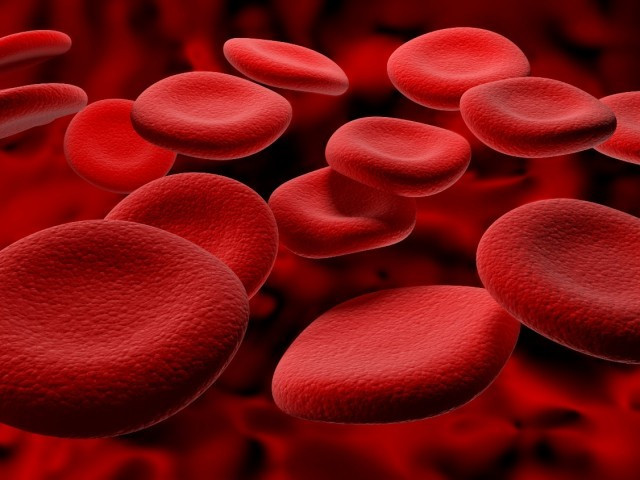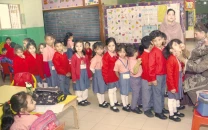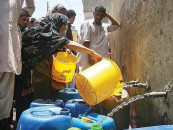Thalassaemia: Cancer medicine can cut down transfusion needs, says study
Another project involving more patients is under way at NIBD to confirm results.

The study was inspired by a research published in 2003 in the Blood journal that involved seven Algerian thalassaemia patients, who showed marked reduction in amount of blood transfused when given Hydroxyurea.
Thalassaemia is an inherited blood disorder in which the body cannot produce adequate amount of haemoglobin for the red blood cells. The result is severe anaemia and patients require a blood transfusion every month in addition to treatment for “iron overload” due to excessive transfusions.
In Pakistan, around 5,000 to 9,000 children are born with beta-thalassaemia annually and the projected carrier rate ranges between five per cent and seven per cent. The annual average treatment expense is $4,400 per patient (Rs15,000 to Rs20,000 per month) - 10 times more than the annual per capita income. Hydroxyurea is, however, available in Pakistan costing Rs7 to Rs 12 for a day’s dose.
Hydroxyurea is given to patients of chronic myelogenous leukemia and can end or reduce the dependence of thalassaemia patients on transfused blood, said Dr Saqib Ansari, the head of the paediatric haematology department, who led the research.
The topic was also Dr Ansari’s PhD thesis under the supervision of Dr Tahir Shamsi of the NIBD and Tabassum Mehboob of Karachi University’s biochemistry department.
The scientists took off with the project in April 2003 with 23 patients. While one patient’s dependence on blood transfusion ended completely, the requirement for 11 others decreased by up to half. The rest were unaffected. The study was published in the American Journal of Paediatric Haematology/Oncology.
The NIBD doctors then replicated the study after the approval of the Institutional Ethical Committee. For 24 months, 146 child patients were put on Hydroxyurea and 60 (41 per cent) reported a sustained haemoglobin amount without blood transfusion. Fifty-seven (39 per cent) patients showed a partial response while the remaining 29 (20 per cent) did not show any improvement. Hydroxyurea is not yet commercially marketed for thalassaemia. Research on this topic has slowed down as it no more remains an issue in the region where the first study was initiated. Thalassaemia is more common in the South Asian region. Similar results have been reported in India and Iran, which can be attributed to similar genetic makeup.
Unlike other countries where Hydroxyurea showed side effects, none were observed in the Pakistani patients, which can, Dr Ansari says, also be linked to genetics. The increase in haemoglobin was not at the cost of significant enlargement of spleen. There were no facial changes and the drug resulted in improved exercise tolerance, increased appetite and weight gain. “That is why this research has a lot of significance and can play a role in authenticating the use of Hydroxyurea for thalassaemia patients,” Dr Ansari believed.
The presence of alpha-thalassaemia gene in Pakistani beta-thalassaemia patients has emerged as one of the important indicators for managing thalassaemic children without blood transfusion.
As the patients with alpha-thalassaemia gene along with beta-thalassaemia gene show a better response to Hydroxyurea, the scientists suggested that every child should be genetically screened at the time of diagnosis. “After determining their genetic makeup, they should be given a trial of Hydroxyurea instead of just blindly transfusing blood,” Dr Ansari said.
Once internationally approved for thalassaemia, the medicine will not only provide for a cheaper alternative but also for decreased dependency on blood transfusions and hence lesser risk of transmission of diseases such as Aids and hepatitis. Even for patients who showed a partial response, the gap between transfusions will help reduce the pressure on the demand of blood.
But until Hydroxyurea is recognised as a prescription medicine for this condition, doctors should only use it in a controlled environment, suggests Dr Ansari.
Another study involving more patients is under way at the NIBD to identify the genes that better respond to Hydroxyurea to confirm these results.
Published in The Express Tribune, September 10th, 2012.



















COMMENTS
Comments are moderated and generally will be posted if they are on-topic and not abusive.
For more information, please see our Comments FAQ